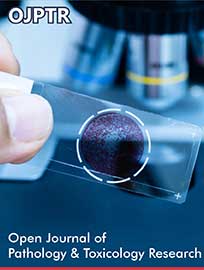 Research Article
Research Article
Evaluation of Selected Durum Wheat (Triticum Turgidum Subsp. Durum) Local Cultivars for their Reaction to Leaf Rust (Puccinia Triticina)
Asnakew Ashagre Z*
Ethiopian Institute of Agricultural research, Debre Zeit Agricultural research Center, Ethiopia
Asnakew Ashagre Z, Ethiopian Institute of Agricultural research, Debre Zeit Agricultural research Center, Ethiopia
Received Date:May 31, 2022; Published Date: June 14, 2022
Abstract
Leaf rust, caused by Puccinia triticina, is one that economically important disease of wheat worldwide. This disease causes severe yield losses ranging from 30 to 50%. In Ethiopia; leaf rust caused by the pathogen Puccinia triticina is one of the important diseases of wheat and yield loss due to this disease has reached up to 75%. The experiment was conducted on wheat disease screening nursery and main research field at Debre Zeit Agricultural Research Center in 2018/19 using 20 local cultivars collected from chefe donsa district which is known availability of local cultivars in the area. Digelu, Arendato and Morocco seeds were sown as susceptible standard checks. Cultivars such as (16, 4, 7, 12, 14, 20, 1, 3 and 2) have shown lesser TRS with resistance types at both locations during the life of the experiment. In the same way Cultivar such as (12 and 14) has shown equal low disease progress rate at screening nursery and main research field. Among tested 20 cultivars such as (19, 6, 7, 11, 12, 13, 3, 2) have revealed less IC value with resistance character than standard check at both locations. It is important to search local variants and cultivars for available gene to tackle the identified and newly evolving races. The available major and minor gene should be identified to know the specific resistance gene. These generate an opportunity to improve durum wheat variety and cultivars resistance against leaf rust and future manipulation in wheat improvement program after confirmatory study.
Keywords: Leaf-rust; Cultivars; TRS; DPR; Infection coefficient
-
Asnakew Ashagre Z. Evaluation of Selected Durum Wheat (Triticum Turgidum Subsp. Durum) Local Cultivars for their Reaction to Leaf Rust (Puccinia Triticina). Open J Pathol Toxicol Res. 1(2): 2021. OJPTR.MS.ID.000508.
-

This work is licensed under a Creative Commons Attribution-NonCommercial 4.0 International License.






